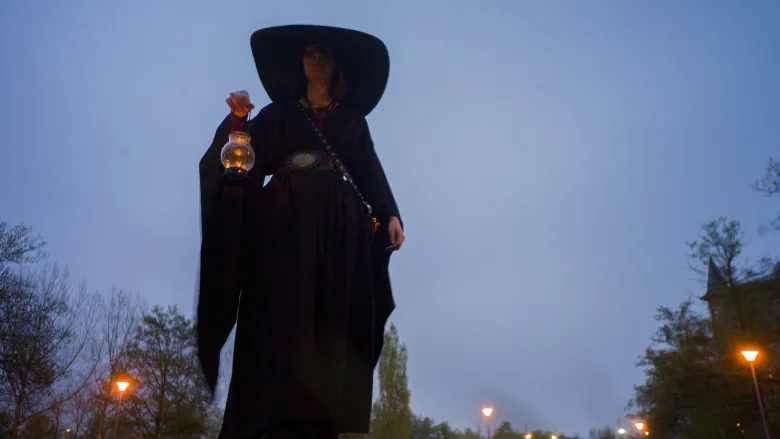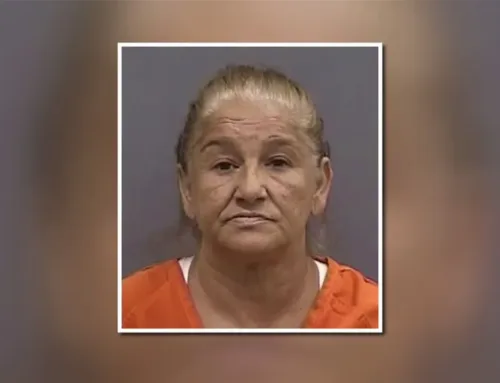Published:December 21, 2019
-CBC
From potions to podcasts and spells to social media, today’s witches are taking stereotypes fuelled by children’s stories and making them disappear.
Far from the wart-nosed, broom-riding wretches, modern witches can be found in classrooms and cubicles. Growing interest in witchcraft has generated an industry of books, podcasts and social media forums dedicated to all things magical.
“Witches have always been cool,” said Glen Fairen, a religious studies instructor at the University of Alberta, who teaches the popular course Studies in Witchcraft and the Occult.
“[But in] the past four or five years, there seems to be a growing population of folks who are both interested in witchcraft, but also folks who practice what they claim is ancient paganism in the modern world.”
Dec. 21 — generally regarded in the northern hemisphere as the shortest day of the year and the first day of winter — is also one of the eight holidays celebrated in the Wiccan calendar.
Winter Solstice, also known as Yule, is a time for witches and warlocks to celebrate the birth of the Sun God.
“Everything has all these pagan elements to it,” said Katie Karpetz, owner of thewitchery.ca, an online retail shop specializing in witchcraft supplies. “For me, I’m just celebrating that this season of death is over. The cold is over and the sun is returning.”
She helps organize and manage The Witchery Market, a craft sale in Edmonton featuring pagan vendors. The market happens on Dec. 21 and 22 at 10433 83rd Ave.
Karpetz started studying witchcraft as a teen, but has been interested since she was a child, conjuring spiders and casting spells in the woods.
She follows the calendar for Slavic paganism, and celebrates winter solstice in a simple way.
“I’ll have my friends over and I’ll make a big dinner and set a place at the table for my deceased ancestors,” she said. “I’m not so much into ritual. I’m more into low magic, non-ritualized magic.”
For practising pagans, it is a true faith, Fairen said.
“It was founded in the 1930s, 1940s and it claims to harken back to pre-Christian Europe,” he said.
“They see it as counter to very patriarchal traditional religious practices. Women are more empowered. Goddesses are considered central and it seems to attract a lot of the younger folks.”
‘Good Witch of the East’
In Edmonton, there are pagan clubs, craft markets, parties and private Facebook groups dedicated to the practice. These include the Edmonton Pagan Network, the Edmonton Women Witches Meetup and the Everything Pagan Coffee Moot.
A few months ago, someone posted on Reddit, looking to recruit “Yeg witches” for a new Edmonton-based coven.
Take a look at the #witchesofinstagram thread and one can find thousands of posts featuring tarot cards, gemstones and spells. A New York Times article published last month asked When Did Everybody Become a Witch?
Fairen said the growing interest in witchy things has been driven largely by pop culture, including television shows and books like Buffy the Vampire Slayer and the Harry Potter series.
“It’s not like Hermione Granger made somebody want to be a witch, but it had a more positive public face. It became less and less of a vilified category,” Fairen said.
“The movement is sort of seen as a willful counter to the cliche of the witch — this idea that it’s a withered old hag. They’re more the Good Witch of the East, I think.”
Debra Bourne, a practising Wiccan and manager of a southside Edmonton pagan supply store, considers herself a good witch. Where Faeries Live sells witchcraft supplies, teaches classes on paganism and hosts regular workshops and ceremonies, such as full-moon rituals.
Bourne said fascination with the occult has been growing steadily for decades.
“I think the initial push during the 1980s and 1990s was coming from a dissatisfaction with organized religion,” she said, “but it’s more than just that.
“With the advent of the internet and the abundance of books, interest on the topic just snowballed.”
Underground covens and casting circles
The witchcraft community in Edmonton has deep roots, Bourne said. While most Edmonton witches are “solitary,” covens have been operating in the city for more than 30 years, she said.
“There is only one coven that is ‘open’ — that anyone can drop in and participate in their rights,” she said. “Most of them are closed, which means you need to know somebody and get invited to their circle.”
Bourne said she began practising about 25 years ago after growing dissatisfied with organized religion.
“A friend of mine was showing me how to make incense and cast a circle and I thought, ‘This is what I’ve been missing.’
“That was in the early 1990s, so it was still a very closed or underground movement. There wasn’t a lot of people being open.”
Bourne kept her practice secret for years, fearing she would be vilified for her beliefs, or could even lose custody of her children. But the taboo has lifted in recent years. Now, she takes pride in teaching new people about the magic of ancient rituals.
“Nowadays, more people know about it,” she said. “Wicca is a recognized religion in Canada, so there isn’t the same discrimination that there was 25 years ago. People have a better understanding of it.”




